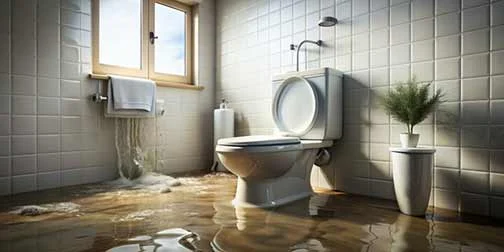
A backed-up sewer line is probably the worst drainage problem in your home, says Tide Management team. Why do they happen? What are the signs of an impending sewer backup in your home? Most importantly, what can you do to prevent this problem in your home?
This post answers all of these questions.
Common causes of sewer backup
A sewer backup is when the wastewater inside a sewer line changes direction. Instead of going into the municipal sewer lines or septic tank, it flows backward and enters the home. Sewage backups happen when your sewer line is blocked or overwhelmed.
Sewer lines can clog, block, or malfunction for different reasons. Some of these reasons are preventable, such as when they are the direct result of the day-to-day habits of a home’s occupants. The other reasons, although natural, are not totally outside human control.
Here is a list of the most common direct and indirect causes of sewer backup:
- Improper disposal of grease, Fats, and Oils (FOG)
Fats, oils, and grease are soft and runny in the warm environment of the kitchen. But once inside your sewer line, they become a hard, fatty substance that sticks to pipe walls, attracts debris, and obstructs water flow.
- Dumping the wrong items into the drains
In the kitchen, these are things like eggshells, coffee grounds, fibrous vegetables, starchy foods, etc. In the toilet, the problem is so-called flushable items like paper towels, wipes, diapers, etc. These forbidden items will often end up blocking the sewer line.
- Tree root infiltration
The roots of nearby trees and shrubs can damage a sewer line by penetrating the pipes. Plant roots invade sewer lines to tap the nutrient-rich water inside them. If tree roots establish themselves within a sewer line, they will eventually block it.
- Damaged sewer pipes
Aging or corroded sewer lines are more likely to block because of the presence of leaks and cracks that make it easy for soil and tree roots to enter the line. Corrosion also increases the rate of buildup within a sewer line, making it more susceptible to clogs.
- Collapsed sewer line
Soil movements may cause sewer line belies or outright collapse. These changes in the structure of the surrounding soil may be due to soil erosion caused by heavy rainfall or plumbing pipe leaks. Heavy rainfall and excessive house settling can also cause these problems.
- Heavy rainfall
Heavy rainfall or snowmelt can overwhelm municipal sewer systems by dumping too much water into them. If this happens, wastewater from homes, not having anywhere to go, will build up inside the sewer line and eventually back up into the house.
Signs of an impending sewer backup in your home
Sewer backups mostly happen as the final consequence of unattended drainage problems in the home. To detect a potential sewer backup before it happens, you need to pay attention to the signs of drainage problems in your home. Here are the signs you should look for.
- Multiple slow drains
If two or more drains in your home are slow at the same time or show signs of being blocked, check to ensure that a bigger problem is not afoot inside your sewer lines.
- Recurring drain problems
If your drainage issues keep coming back, there is a good chance you have not found the issue. Maybe the issue is inside the sewer line and not the drain line you have been working on.
- Foul odors in your home
This happens when sewer gases are unable to escape from the sewer line, either because the line is blocked or the air vent is damaged.
- Gurgling noises
Trapped sewer gases inside the sewer line may eventually find their way out through the toilet. The escaping gas makes a gurgling sound as it forces its way through the water inside the toilet bowl.
- Backed-up drains
If bathwater is refusing to flow into a shower or bathtub drain, and the water level inside your toilet keeps rising and falling, you should definitely have your sewer line cleaned out.
How to prevent sewer backups in your home
The first step is to fix the existing drainage problems in your home. If any of the above signs are in your home, you want to investigate them thoroughly. Sewer backups often happen because homeowners fail to deal with seemingly small drain issues.
Secondly, you should create a preventive drain maintenance program for your home. Instead of waiting until problems appear before you do drain maintenance, this program helps you maintain your drains on a schedule. This helps to preempt any potential issues in the sewer system.
Thirdly, if there is any risk that heavy rainfall or snowmelt can overwhelm the city sewer system and trigger a sewer backup in your home, you should install a backwater prevention valve in your sewer line. This will stop sewage from flowing backwards when the system is overloaded.
Lastly, you should have the contact details of a trustworthy local professional plumber on speed dial. The plumber you choose should possess extensive knowledge of the common sewer line problems in your locality, and they must offer emergency plumbing services.

